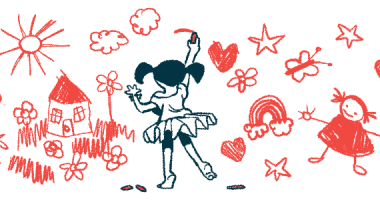Study: Kidney stones may be more common in SMA type 1 children
7 of 13 SMA children had nephrolithiasis in a small study in Turkey

Children with spinal muscular atrophy (SMA) type 1 may be at an increased risk of developing kidney stones, suggesting the condition may be more common than previously thought, according to a small study in Turkey.
It’s possible that nephrolithiasis — the medical term for kidney stones — had been underestimated before modern disease-modifying therapies became available, since children’s lifespans were shorter and they weren’t routinely tested for changes in urine.
“Nephrolithiasis is not a classic or well-documented condition in children with SMA,” the researchers wrote in “Children with Type 1 Spinal Muscular Atrophy are at increased risk for nephrolithiasis,” which was published in Pediatric Neurology.
SMA occurs when motor nerve cells — those responsible for movement — lose their ability to function and die over time. As a result, people with SMA have muscle weakness and may develop difficulty moving, breathing, eating, or speaking.
In SMA type 1, one of the most severe forms of the disease, symptoms are present from birth or become apparent early in life, usually manifesting before 6 months. Left untreated, most children don’t survive past two years. Disease-modifying therapies have changed the course of SMA and helped many children with SMA type 1 achieve otherwise unattainable motor milestones, and to improve or maintain skills needed for daily life.
Kidney stones in children with SMA type 1
To confirm “clinical observations [suggesting] that the risk of nephrolithiasis is increased,” the researchers reviewed the medical charts of 13 children receiving treatment with Biogen’s Spinraza (nusinersen), the first approved disease-modifying therapy for SMA.
All had a diagnosis of SMA type 1 and seven (54%) had kidney stones. Two had a single kidney stone; the remaining five had multiple ones. Their size ranged from less than 3 mm (about 0.1 inches) to more than 8 mm (0.3 inches).
Indications for an ultrasound scan to check the kidneys included microscopic hematuria (the presence of red blood cells in urine), the presence of calcium crystals in urine, and discomfort or pain when urinating.
Children with or without kidney stones were about the same age (mean 3.2 vs. 3.5), but those with kidney stones were more likely to have a history of urinary tract infections and denser urine, suggesting these may be risk factors for their development.
Additional analyses of urine samples of five of the children with kidneys stones showed all had hypercalciuria, or excess calcium in urine, and three had hyperuricosuria, or excessive amounts of uric acid in urine.
All the patients with kidney stones had acidified urine, three had increased levels of protein in their urine (proteinuria) and six had high urine specific gravities — meaning their urine was more concentrated than usual. Excess levels of calcium in urine could be a result of immobilization, while high urine specific gravity could indicate reduced fluid intake.
Identifying risk factors, boosting daily fluid intake, and administering medical treatments may reduce the need to extract kidney stones surgically, the researchers said.
In one child, a large kidney stone was treated with extracorporeal shock wave lithotripsy, a noninvasive procedure that uses shock waves to break the stones apart. In three children, the kidney stones’ size remained stable, and in one, it became smaller. Two children died within two months of a nephrolithiasis diagnosis.
“Considering that life expectancy has increased with developments in treatment in recent years, we believe that it is important to monitor patients in this regard and to take preventive measures,” wrote the researchers, who called for further study to “provide more comprehensive insights into the condition’s characteristics, risk factors, and treatment approaches.” The study’s small sample size was noted as a limitation.








